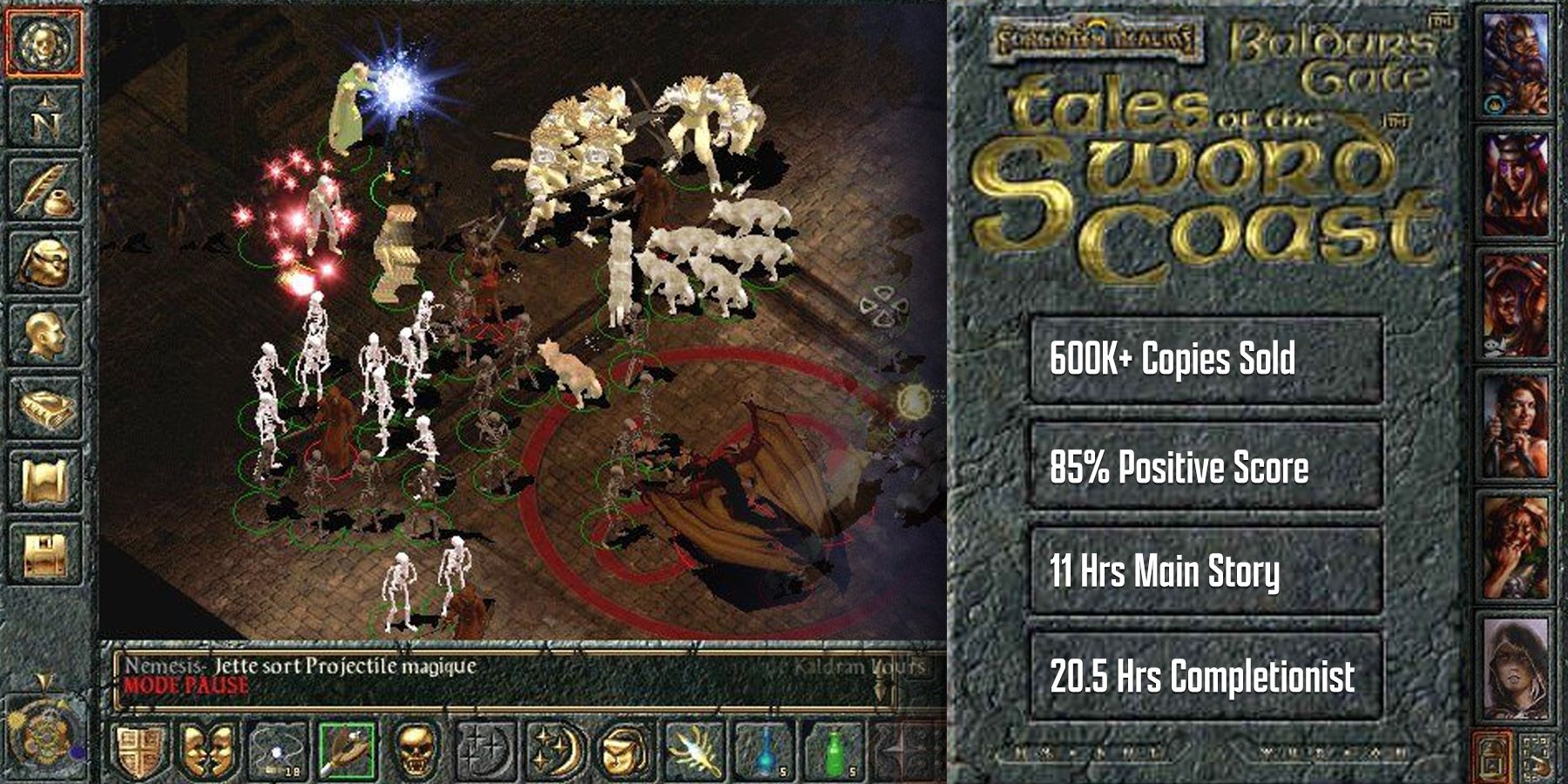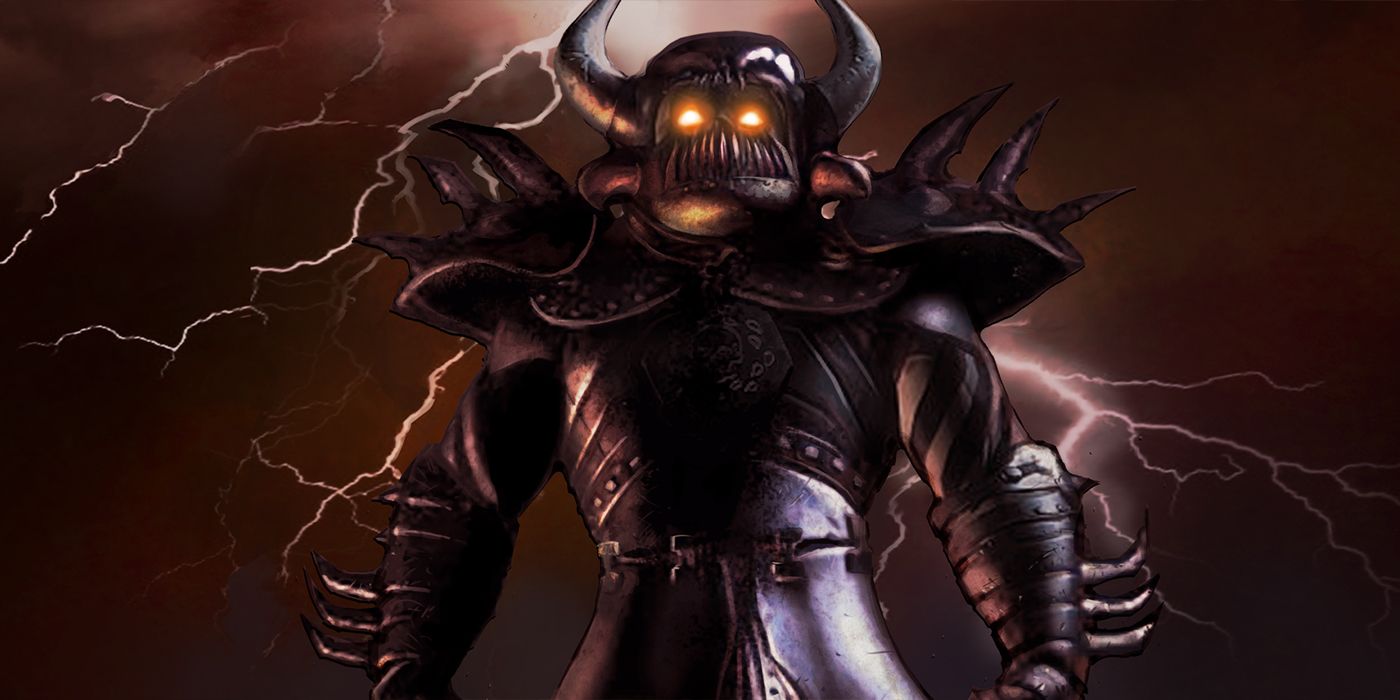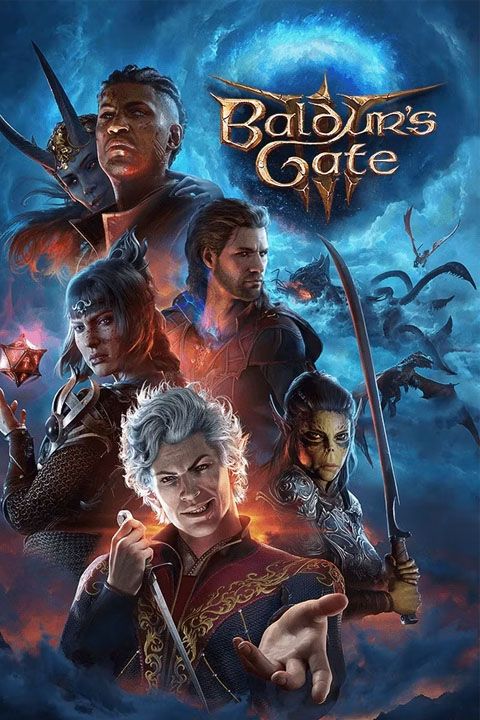Key Takeaways
- Tales of the Sword Coast provides captivating side missions that are independent of the main plot of the original Baldur’s Gate, giving players the freedom to explore at their own pace.
- The expansion’s Durlag’s Tower offers a demanding dungeon experience, prioritizing gameplay over narrative for a truly engaging RPG experience.
- By expanding on Dungeons and Dragons mythology rather than the base game’s storyline, the expansion enriches the world of Baldur’s Gate for a more genuine RPG experience, deserving recognition on its 25th anniversary.
The original Baldur’s Gate is a landmark RPG title that has shaped the genre in the years that followed. Its successful adaptation of the Dungeons and Dragons ruleset allowed for a more extensive pre-written narrative, distinguishing it from the more open-ended style of play it was based on. BioWare capitalized on the joy of exploring Baldur’s Gate’s side content in an expansion released shortly after the base game.
While DLCs like the second game’s Throne of Bhaal and Beamdog’s Siege of Dragonspear for Enhanced Edition expanded the overarching story, Tales of the Sword Coast, released on April 30, 1999, is remembered for entirely different reasons. The narrative of Baldur’s Gate‘s Bhaalspawn and their connection to characters like Sarevok is a captivating story that has contributed to the success of BG3 in recent years. A key appeal of this franchise has always been the ability to immerse oneself in a player-chosen adventure. This expansion achieved just that, making it worth celebrating on its 25th anniversary.
Tales of the Sword Coast: A Compilation of Side Missions
Tales of the Sword Coast was not just an expansion; it was a collection of side quests that allowed players to explore the world of Baldur’s Gate in their own way. This approach was a departure from the main game’s narrative-driven structure, offering players a more open-ended experience.
One of the most notable features of the expansion was Durlag’s Tower, a challenging dungeon that prioritized gameplay over storytelling. This design choice provided a truly immersive RPG experience, allowing players to engage with the game mechanics in a more in-depth way.
The expansion also built on the lore of Dungeons and Dragons, enhancing the world of Baldur’s Gate and providing a more authentic RPG experience. This approach was a significant factor in the expansion’s success and is a testament to the enduring appeal of the Baldur’s Gate franchise.
As we celebrate the 25th anniversary of Tales of the Sword Coast, it’s clear that the expansion has left a lasting impact on the RPG genre. Its focus on player freedom, challenging gameplay, and rich lore set a high standard for future expansions and games in the franchise.
Exploring Unrelated Destinations
The DLC, based in the new hub town of Ulgoth’s Beard, operates on a separate map that links to various adventures. The unique aspect of these events, whether it’s battling through a frosty island prison or investigating a group of werewolves after a shipwreck, is that they are not connected to the main storyline of Baldur’s Gate. This might seem like a gamble, as players might expect a continuation of the game’s narrative after its monumental success. However, the success of this expansion lies in its ability to cater to fans’ desire for independent exploration.
Freedom to Return to the Original Game
The unrelated nature of the content in Tales of the Sword Coast might give the impression that there’s no real motivation to complete it. However, the decision ultimately lies with the player. As long as the “point of no return” hasn’t been reached in Baldur’s Gate’s storyline, players have the liberty to leave Ulgoth’s Beard and return at their convenience. Given the high difficulty level of several battles in this DLC, this flexibility can make it an exciting personal challenge to revisit.
The Shortcomings of the Isle of Balduran’s Rigid Design
How the Werewolf Questline in Tales of the Sword Coast Undermines Its Strengths
The only aspect of the expansion that contradicts its generally high quality is the somewhat artificially challenging nature of the werewolf and wolfwere situation on the Isle of Balduran. This quest involves the player searching for Balduran’s ship and ending up stranded on an island overrun by wolfweres, one of DnD‘s more obscure creatures, who inhabit its wreckage. Not only does it prevent the player from leaving, but the party can eventually become cursed with lycanthropy and turn hostile if the necessary precautions aren’t taken.
Many players have also voiced their frustration with the Greater Wolfwere boss encounter at the end of this quest, as it can only be damaged by rare silver weapons and regenerates health at a seemingly unbalanced rate. There is a certain depth to the revelation that the werewolves were actually wolfweres defending themselves, but this potential is squandered as the player has no option of aligning with any faction. The Isle of Balduran can at least be bypassed in favor of what some consider a contradictory highlight of the highly acclaimed original Baldur’s Gate.
Durlag’s Tower: The Epitome of Dungeon Exploration in the Baldur’s Gate Series

The Ultimate CRPG Challenge: Best Suited for Endgame
For many gamers, the rest of the expansion seems like a prelude to its main attraction, Tales of the Sword Coast’s Durlag’s Tower. Tasked with retrieving the Soultaker Dagger, players may find themselves overwhelmed by a dungeon teeming with traps, treasures, and challenging enemy encounters that can be lethal even for parties at the maximum level. The sense of peril that permeates this tower as players descend its subterranean labyrinth is reminiscent of what made DnD so captivating in the first place, and it largely forgoes narrative storytelling.
Minimal Narration as a Powerful Tool for Immersion in RPGs
There’s virtually no storyline in the room-to-room exploration of Durlag’s Tower, but the challenges of overcoming its difficulty can become the player’s personal narrative. When encounters are calibrated such that advanced Dungeons and Dragons combat strategies are necessary even with the best equipment in use, there is a constant sense of danger that can lead to intense highs and lows, creating some of the most memorable moments in a playthrough.
Detachment from Baldur’s Gate Main Storyline Enhances Tales of the Sword Coast’s Best Feature

Drawing Inspiration from Dungeons and Dragons
Constructing a World from Dungeons and Dragons Rather than the Basic Game
The metropolis of Baldur’s Gate, although previously referenced in DnD literature, was given a new lease of life by BioWare. The studio enriched the world and its lore in a unique manner, transforming it into a significant part of RPG history. The studio’s innovative approach to expanding the influence of Bhaal in the Forgotten Realms, which was previously considered a rather mundane concept, led to the creation of a formula that was further developed in the game’s expansion.
Durlag’s Tower, despite its seeming irrelevance to the main storyline of BG, has gained considerable prestige over time. This is likely to astonish new players who are just discovering the game. The tower was constructed with a deep respect for the original material. In a conversation with the blog Best cRPGs, Lukas Kristjanson, the lead writer, shared his thoughts on the creation of this influential dungeon:
”This was our initial attempt at an expansion, and we aimed to create something that could be integrated and activated at almost any stage. Given that it’s Dungeons and Dragons, we wanted to experiment with a traditional crawl…So we opted for something rooted in Forgotten Realms, but not so detailed that fans would criticize our interpretation as ‘inaccurate’.”

Baldur’s Gate 3
Baldur’s Gate 3 is an RPG inspired by Dungeons and Dragons, developed and published by Larian Studios. It offers both single-player and cooperative gameplay, where players can create their characters by choosing a starting class, embark on quests, level up, and participate in turn-based combat using the D&D 5th edition rule set.
- Franchise
- Baldur’s Gate
- Platform(s)
- PC , Stadia , macOS , PS5 , Xbox Series X
- Released
- August 3, 2023
- Developer(s)
- Larian Studios
- Publisher(s)
- Larian Studios
- Genre(s)
- RPG
- ESRB
- M for Mature: Blood and Gore, Partial Nudity, Sexual Content, Strong Language, Violence
- How Long To Beat
- 30 Hours
- Metascore
- 96
- Split Screen Orientation
- Vertical Only
- Number of Players
- 1-4
- PS Plus Availability
- N/A
- Local Co-Op Support
- 1-2 Players